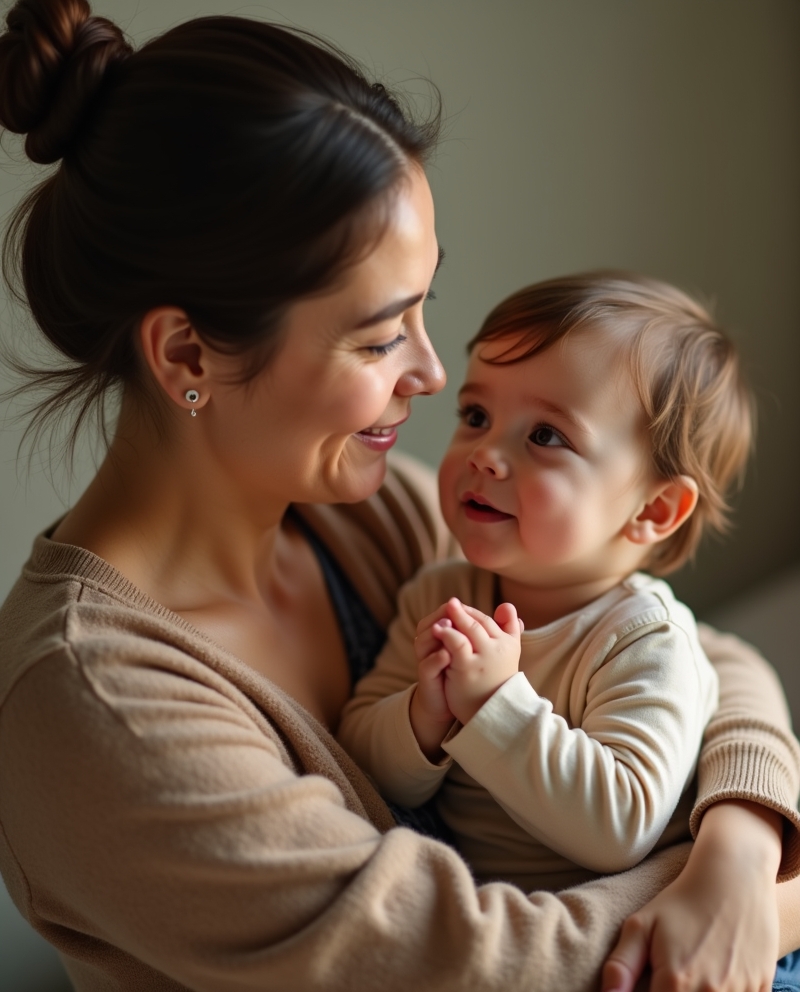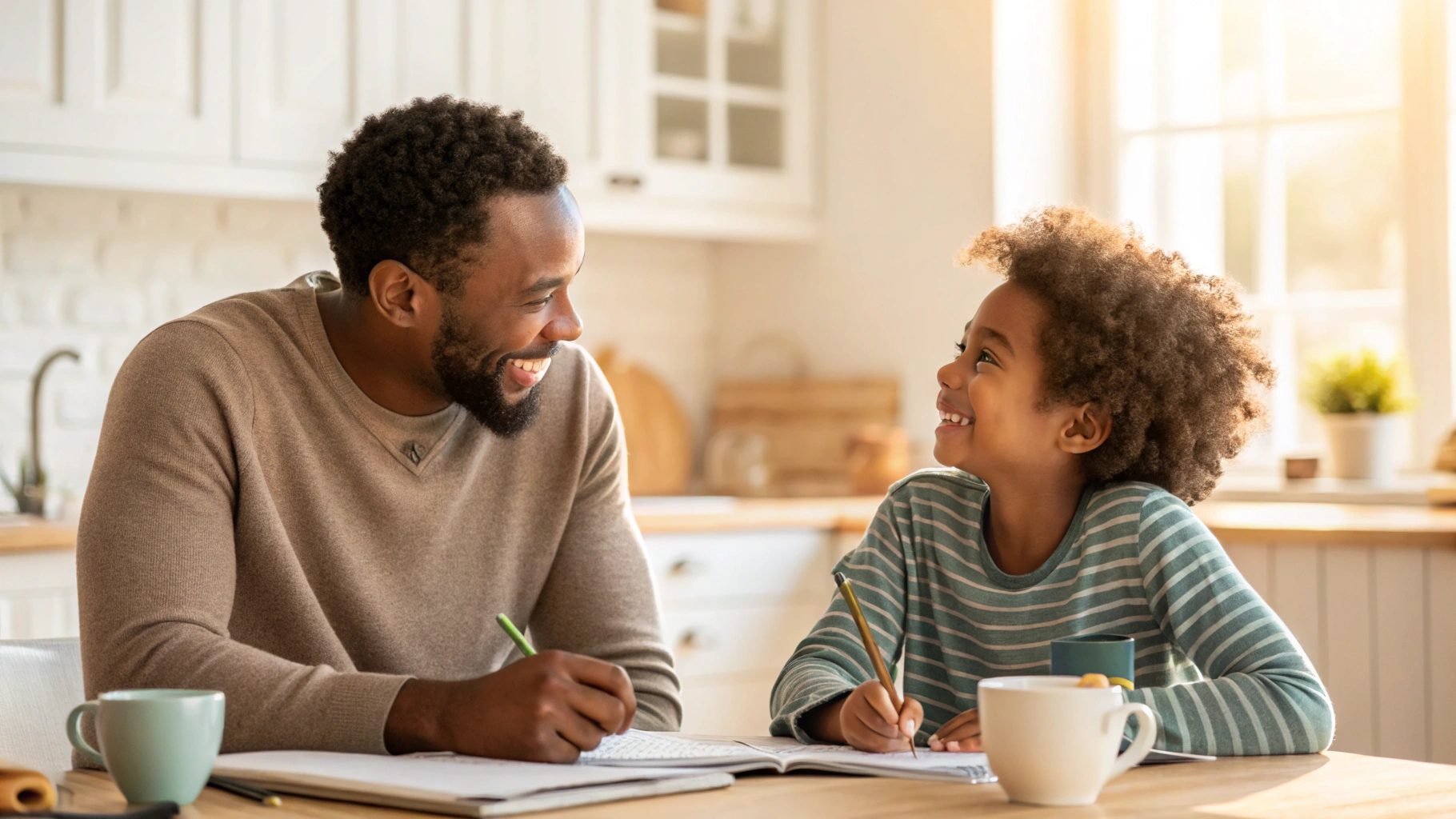You ever have one of those evenings when everything just feels… off? Dinner’s on the table, your child’s pushing peas around their plate, and you can tell something’s wrong—but no one’s talking. I’ve had that exact scene play out more than once in my own kitchen.
That’s when it hit me: the problem wasn’t that my kids didn’t want to talk. It was that I wasn’t really listening. I was responding, instructing, correcting—but not truly hearing.
If you’ve ever found yourself in that same spot, welcome to the club. Talking with our children—really talking—is both one of the simplest and hardest parts of parenting. It’s what stands between a household filled with connection and one filled with tension, silence, or misunderstandings.
So, let’s talk about being “talking parents”—the kind who listen with empathy, speak with intention, and build homes where every voice (big or small) feels heard.
What It Really Means to Be “Talking Parents”
Being a talking parent isn’t about having endless conversations or turning your home into a debate club. It’s about cultivating an atmosphere of trust, openness, and presence. It’s about teaching your child that communication is safe, that truth is welcome, and that mistakes aren’t disasters but opportunities to understand each other better.
In my early days as a mom, I thought effective communication meant explaining everything—why a rule existed, why we needed routines, why bedtime wasn’t negotiable. But what I didn’t realize then was that talking isn’t just verbal—listening is half of it.
A real talking parent knows that the best conversations happen in ordinary moments—while folding laundry, driving to soccer practice, or tucking your child in at night.
The Foundation: Why Communication Matters in Parenting

Good communication is the heartbeat of a happy family. When you and your child can talk openly, you build what experts call emotional safety—the sense that it’s okay to express yourself without fear of judgment or punishment.
Children who feel emotionally safe are more likely to:
- Share when something’s wrong (before it becomes a big problem).
- Develop stronger self-esteem.
- Build healthier future relationships.
- Handle conflict with calm and confidence.
In fact, this kind of trust is one of the cornerstones of what’s known as positive parenting. If you’ve read my post Happy Family, Happy Life: Parenting Techniques for Lasting Joy, you already know that positive parenting isn’t about being permissive—it’s about guiding instead of controlling, leading with empathy instead of fear.
And communication is the bridge that makes it all possible.
The Silent Barriers: Why Parents and Kids Stop Talking
Before we can improve communication, we have to understand what breaks it down. Here are some of the biggest barriers I’ve experienced (and learned to overcome):
1. Talking at rather than with
It’s easy to slip into lecture mode. I used to do it after homework battles—reciting mini speeches about responsibility and gratitude. But my son’s eyes would glaze over every time.
Now, I aim for two-way conversations. Instead of “Why didn’t you finish your homework?” I ask, “What part of your homework felt tricky today?” It shifts the tone from interrogation to curiosity.
2. Distractions Everywhere
We live in a world where screens are constantly competing for attention (mine included). I once realized my daughter had been trying to tell me a story for five minutes while I was scrolling emails. That moment stung.
Now, we have a family rule: no phones during meals or important conversations. When my kids talk, I put my phone face down and give them my full attention. Small habit. Big difference.
3. Parents’ Emotional Overload
Sometimes, we’re too stressed or tired to engage—understandably so! But kids pick up on that energy. Practicing self-care, even five minutes of deep breathing before bedtime routines, helps me reset so I can show up emotionally for my kids.
Positive Communication: Building Emotional Safety
Our E-book
To become a truly talking parent, focus on building emotional safety first. Here’s how I’ve put that into practice at home:
1. Active Listening
Truly listening means more than just hearing the words—it means picking up on the emotions underneath.
When my son says, “I hate school,” my instinct used to be reassurance or problem-solving (“You’ll be fine!” or “What happened?”). But now I start with empathy: “Sounds like school felt really tough today.”
That simple validation diffuses frustration and invites openness.
2. Use “I” Statements
Instead of “You never clean your room,” try, “I feel overwhelmed when the room gets messy—it makes it hard for everyone to move around.” It models respectful expression and helps kids mirror the same behavior.
3. Acknowledge and Name Emotions
Helping kids name their feelings builds emotional intelligence. My daughter once slammed her door after losing a game. Instead of scolding, I said, “You look frustrated—do you want to talk about it?” Within minutes, we moved from tears to laughter.
4. Gentle Parenting in Action
Gentle parenting is a beautiful philosophy that aligns with open communication. It emphasizes empathy, respect, and understanding over strict discipline.
When I started using gentle approaches—kneeling to my child’s level, softening my tone, pausing before reacting—our conversations became calmer, more productive, and less emotionally draining for both of us.
Talking Through the Tough Stuff
Not every conversation will be easy. Sometimes kids clam up, shut down, or push back. When that happens, keep these tips in mind:
1. Pick the Right Moment
Timing is everything. Talking about a meltdown in the middle of one rarely helps. Wait until emotions cool off—maybe later during a walk or bedtime chat when they’re more receptive.
2. Validate, Don’t Dismiss
Phrases like “It’s not a big deal” or “Don’t be silly” can make kids retreat emotionally. Instead, say, “I can see why that upset you,” or “That must’ve felt unfair.”
3. Let Silence Work for You
Pauses can be powerful. Sometimes kids need space to find words, especially after big emotions. I’ve learned that holding silence—without rushing to fill it—often leads to them opening up on their own.
4. Repair After Conflict
We all lose our patience sometimes. What matters most is what happens afterward. When I’ve snapped unfairly, I apologize: “I shouldn’t have yelled earlier. I was frustrated, but that’s not your fault.” This repairs trust and shows accountability—a lesson children carry for life.
Breaking the Cycle: From Toxic Patterns to Trust
Many of us are parenting differently from how we were raised—and that’s both beautiful and challenging.
If you grew up in a home where feelings were dismissed or correction came before connection, communication may not come naturally. I had to unlearn habits like interrupting or downplaying emotions because that’s how I learned to “be strong.”
Recognizing and breaking those toxic parenting patterns is one of the greatest gifts you can give your children. It teaches them that love can evolve, that growth is always possible, and that vulnerability isn’t weakness—it’s courage.
If this resonates deeply, you may find comfort in exploring more insights on transforming your family dynamic in my post Happy Family, Happy Life: Parenting Techniques for Lasting Joy, where I share research-backed strategies to build lasting happiness at home.
Fun Ways to Encourage Conversation
Not everything about parenting communication has to be serious! Here are a few fun traditions that have worked wonders for us:
1. Dinner Table Questions Jar
We keep a jar filled with slips of paper like:
- “What made you laugh today?”
- “What’s one thing you wish adults understood?”
- “If you could change one rule, what would it be?”
These get conversations flowing in lighthearted ways—and sometimes spark surprisingly deep discussions.
2. Bedtime Reflections
Before lights out, we each share one “win” of the day and one “wish” (something we hope goes better tomorrow). It’s an easy gratitude exercise that keeps communication consistent, not just occasional.
3. Family Walks or “Talk Drives”
Sometimes the best talks happen when no one’s making direct eye contact. Our family walks—or those spontaneous drives to get ice cream—tend to be when my kids open up most.
Turning Communication into Connection
Here’s the golden rule I’ve come to live by: It’s less about what we say and more about how we make our children feel while we say it.
When your child talks to you, listen not only with your ears but with your heart. When you respond, do it from a place of compassion, not control. Be the calm in their chaos, the listener in their noise, the safe place they know they can always come home to.
These habits don’t just nurture your child—they strengthen your entire family’s sense of belonging and emotional security.
Keep the Conversation Going
Parenting isn’t about getting every conversation right. It’s about showing up, again and again, ready to listen, ready to grow. The more you talk—and listen—the more your child learns that connection is always possible, even when things are messy or uncomfortable.
If you practice empathy, model gentle communication, and stay curious about your child’s feelings, you’re already doing the most powerful thing any parent can do: raising a human who feels heard, valued, and loved.
And remember—being a talking parent is less about the quantity of words, and more about the quality of presence.
💬 “Children learn more from what you are than what you teach.” – W.E.B. Du Bois
So, take a breath. Put your phone down. Ask your child how their day really went. And when they answer—listen like their words are the most important ones in the world. Because to them, they are.
Happy Family, Happy Life: Parenting Techniques for Lasting Joy — discover simple, daily habits that help you create a more connected, joyful home.





